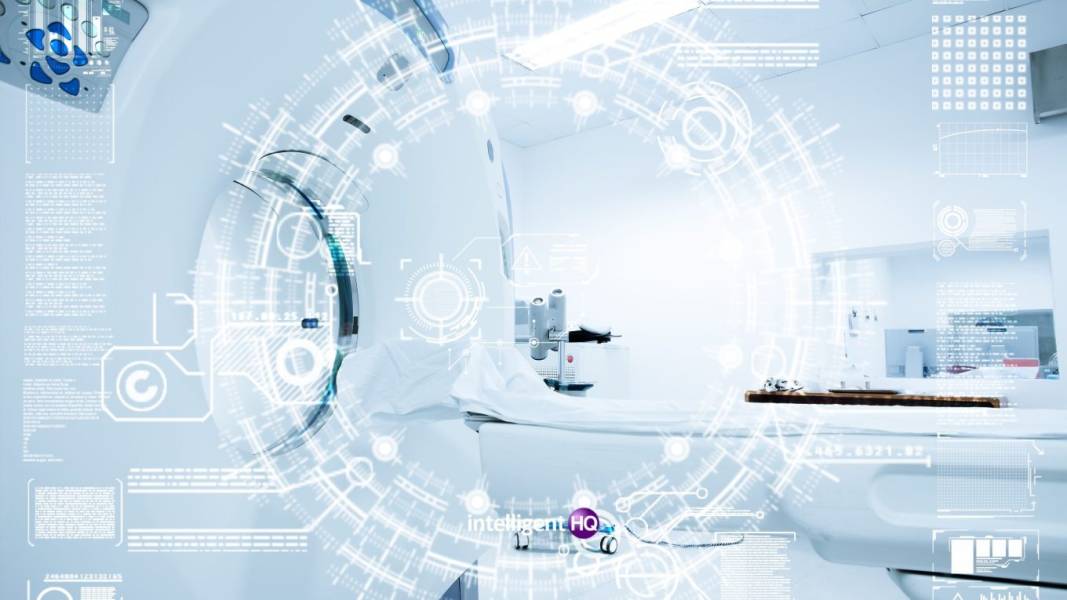The healthcare sector has always benefited immensely from technological advancements. Emerging technologies like artificial intelligence (AI), cloud computing, extender reality (XR), and the internet of things (IoT) are helping to develop innovative treatments and solutions like telemedicine, personalised medicine, genomics, and wearables while alleviating cost burdens. With this changing landscape, we are ushering in a new future for healthcare.

The phenomenon of ‘digitalisation’ has transformed almost every industry during the last decade. Besides improving efficiency and productivity, emerging technologies are increasingly proving to enhance the quality of human life. The global healthcare sector was no exception to the digital revolution. While the overall adoption is still slow, practically every healthcare institution today is implementing technological advancements to combat illness, develop new vaccinations, treat patients, and help them live healthier lives.
Healthcare technologies are diverse and encompass devices, medicines, vaccines, procedures, and systems to streamline operations, trim costs, and improve the quality of care delivered. Artificial intelligence (AI), blockchain, robotics, bio-printing, and nanotechnology are among the most promising technologies in the healthcare space.
The Healthcare Technology Market is expected to be $390.7 billion by 2024. According to the HIMSS Future of Healthcare Report, over the next five years, 80 percent of healthcare providers aim to increase their investment in relevant technological solutions.
Clearly, many healthcare organisations that would not have been considered tech firms in the past have changed their focus to technology and its potential to transform how their products and services are delivered.
AI and Natural language integration
AI and Natural Language (NL) integration is an incredibly powerful combination of technologies. This combination allows machines to understand and process human speech, enabling them to respond to user input in meaningful ways. With AI and Natural Language integration, devices can better understand the context of conversations and provide more accurate responses.
The high-level use case for artificial intelligence in healthcare is aiding in the analysis of enormous amounts of unstructured data. On the other hand, this could also be conveniently utilised to convert the machine-readable format into natural language for reporting, training, and education purposes.
For instance, DeepMind by Google developed an AI algorithm for breast cancer analysis. This algorithm could detect cases of breast cancer more accurately, outsourcing human potential by an average of 11.5 percent.
Avive AED is another AI-based solution to improve survival rates of cardiac arrest. The technology was developed by Avive Solutions.
AI and NLP integration also drives better and more trustworthy clinical decisions and patient health outcomes based on postoperative feedback.
‘Augmented’ and ‘Virtual’ environments of learning and surgery
A recent advancement in the field of medicine is the introduction of virtual and augmented environments, both for performing surgeries and procedures, learning, and training. Utilising augmented reality technologies, such as AR surgery solutions, provides surgeons with navigational views, integrated targeting systems, precise instrument tracking, and real-time 3D reconstruction and segmentation during surgeries. This increases precision, which prevents errors, reduces operating room times, and improves the patient’s outcome. AR technologies are now also used by medical students and surgeons to simulate and experience complicated medical procedures in a realistic environment.
A study by Harvard Business Review shows that VR-trained surgeons are 230 percent more efficient in overall performance than their traditionally trained peers. Virtual and augmented reality solutions provide a harmless way for surgeons and trainees to benchmark their skills in real-time.
“According to a study published in one of the Journals of the American Academy of Orthopaedic Surgeons, we can take a trainee and have them go into a virtual environment, learn efficiently, and then actually do that procedure on an actual patient in the OR successfully. That to me is really where the value comes in because you show direct translation.
We all learn and model things, but if there is a technology that actually shows the skills that are transferable to the OR, that’s the part to me that’s most important. That means we can take a non-expert or an inexperienced person and make them into an experienced one with an intervention like VR.” – Danny Goel, MD, Co-Founder and CEO of Precision OR.
Technology has enabled numerous solutions in the field of healthcare that were once simply a work of fiction. Augmented Reality environments by AccuVein enable clinicians to locate the veins of the patients based on the heat signatures of the blood flow. Therefore, by reducing the chances of error in the first stick, this vein finder technology has improved the probability of success by almost 3.5 times, not to mention the reduction in instances of call for assistance by 45%.
Statistically, this also leads to a more reassuring system of healthcare and wellbeing for patients.
Internet of Medical Things
The Internet of Medical Things (IoMT) is a network of interconnected medical devices and applications that exchange data with each other. It is a rapidly growing field of technology that has the potential to revolutionise healthcare. The global IoMT market was worth $44.5 billion in 2018, and by 2026, it is predicted to be worth $254.2 billion. Investments in IoMT are already on the upswing, and the healthcare technology trend is expected to grow in the future years.
IoMT has the potential to enhance patient care and improve healthcare outcomes by providing real-time data to physicians, allowing them to monitor patient health and intervene sooner. Digital blood pressure cuffs, for instance, are smart pills that are equipped with edible sensors. These cuffs deliver a continuous stream of blood pressure and pulse data to the practitioner who can alert the patients, living remotely, if they are not taking the medications as prescribed.
IoMT can also provide patients with better access to quality healthcare, as well as enable remote monitoring and diagnosis of patients. This is especially important for patients with limited mobility. Today, medical service providers are using portable point-of-care devices to run regular tests and share the results remotely with a doctor.
Wearables like watches and bands are some of the popular ways to track health metrics. These wearables are also being specially enabled with mechanisms to stimulate or deactivate portions of brain for patients with epilepsy and strokes. Special wearables are also being designed by Defence Advanced Research Projects Agency (DARPA) for amputated patients to create a regulating interface between their prostheses and brain system.
Overall, IoMT techniques can reduce costs in healthcare organisations by allowing them to better manage resources and improve efficiency, while also maintaining better health trends.
Ever-evolving telemedicine
By now, consumers are globally accustomed to the seamless experience of a mobile app. The healthcare apps of today are enabling patients more than simply to book appointments, order medications, track their health records, and access their medical information: all from the comfort of their own homes.
A patient can conveniently interact with healthcare practitioners across the globe through a mobile app, like My Care Central by SharpQuest, with integrated EHR/EMR systems. . Studies conducted on these apps by various institutions conclude that these measures improve clinician satisfaction, while offering reliability and trust to the patients. Further, they also suggest easier workflows and reduced costs.
The future trends
Emergent techs are increasingly proving to be the ‘patient first’ trends, creating innovative pathways for medicine and its applications, and contributing to greater research and innovation. In its inception, yet, these technologies have already brought a significant shift in the existing paradigms.
As technology continues to advance, so do the possibilities for healthcare providers and patients alike. From innovative treatments to more accurate diagnoses, the potential for technology to revolutionise healthcare is immense. However, the sole aim of all this advancement is to improve the quality of the healthcare system, while making it more efficient and effective.

Hernaldo Turrillo is a writer and author specialised in innovation, AI, DLT, SMEs, trading, investing and new trends in technology and business. He has been working for ztudium group since 2017. He is the editor of openbusinesscouncil.org, tradersdna.com, hedgethink.com, and writes regularly for intelligenthq.com, socialmediacouncil.eu. Hernaldo was born in Spain and finally settled in London, United Kingdom, after a few years of personal growth. Hernaldo finished his Journalism bachelor degree in the University of Seville, Spain, and began working as reporter in the newspaper, Europa Sur, writing about Politics and Society. He also worked as community manager and marketing advisor in Los Barrios, Spain. Innovation, technology, politics and economy are his main interests, with special focus on new trends and ethical projects. He enjoys finding himself getting lost in words, explaining what he understands from the world and helping others. Besides a journalist, he is also a thinker and proactive in digital transformation strategies. Knowledge and ideas have no limits.






























